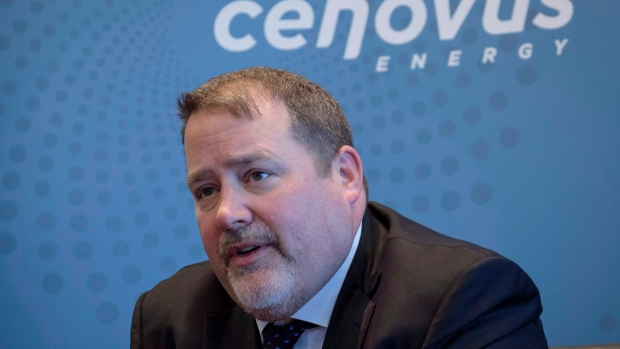Oct 31, 2018
Cenovus CEO says pipelines urgently needed to ease WCS woes

Cenovus Energy Inc.’s chief executive says the energy producer is doing what it can to alleviate production bottlenecks in Canada’s oil sands as Western Canadian Select continues to trade at a steep discount – but the industry needs more help.
“I think we’ve done our part, but we’re going to have to see some other upstream participants also enter into similar agreements to get over this surplus production problem we have in the province,” Cenovus CEO Alex Pourbaix told BNN Bloomberg in an interview on Wednesday. “But I’m confident that the industry can step up and clean off that excess of supply through rail over the next quarter or two.”
“The difference between how much oil is being produced in the province and how much it needs to get out is probably somewhere in the range of 300,000 to 400,000 barrels (per day),” he added. “Cenovus will do its part and part of that has been to lock up 100,000 barrels a day of rail takeaway capacity to the U.S. Gulf Coast.”
In its third-quarter earnings release, the company also said it is actively assessing other avenues of production management, slowing production at Foster Creek and Christina Lake oil sands projects, and exploring a variety of additional low-cost storage options for its oil.
The company reported a loss of $241 million in its third quarter as the company continued to focus on reducing debt, while revenue totalled $5.86 billion, up from $4.39 billion a year ago.
In its outlook for the year, the company reduced its forecast capital spending by about $250 million with essentially no change to its production guidance.
The company also struck a positive tone, however, as it said it expects to the see the price differential between Canadian oil and the North American benchmark West Texas Intermediate narrow in the coming months as scheduled maintenance at North American refineries ends, and crude-by-rail activity ramps up.
Pourbaix said that increasing Canada’s pipeline capacity is urgently needed to help oil sands players remain competitive.
“What is really going to solve this problem is getting those pipelines built,” he told BNN Bloomberg. “There’s nothing more urgent that I can see for our country, in terms of economic stimulus, than to get those pipelines built.”
Pourbaix said that the oil patch is banking on Enbridge Inc.’s Line 3 replacement, but that the outlook on some of Canada’s other major projects remain in some state of flux.
“The one that the industry is counting on and the one that is most certainly coming in the short-term is Enbridge’s replacement for Line 3,” Pourbaix said. “It certainly seems that TransCanada is moving towards an ultimate [final investment decision] on Keystone XL. They haven’t made that commitment yet, but it certainly seems the industry is expecting that.”
He even expressed optimism that the federal government’s Trans Mountain pipeline expansion project will eventually see completion.
“I think, ultimately, I do expect we’ll get TMX done, but we obviously are back in a bit of a regulatory loop on that project for the time being.”
With files from the Canadian Press



